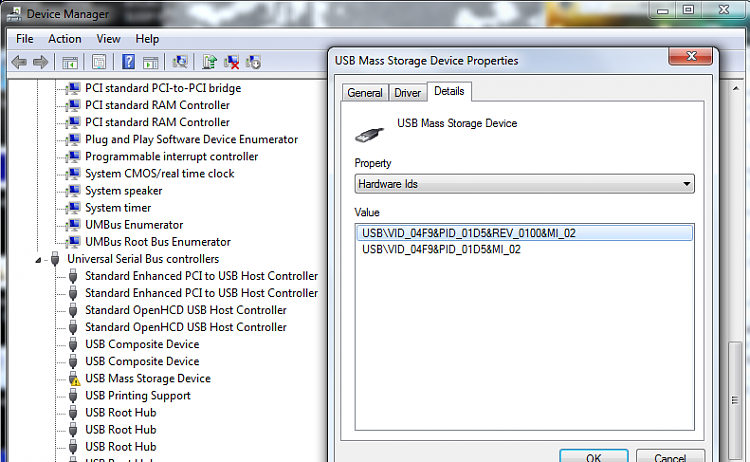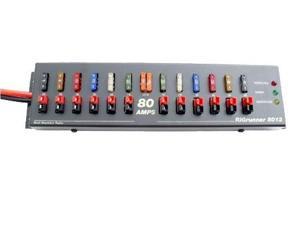For recovering deleted, lost or formatted files (photos, videos, music) from your Android devices with any Photo Recovery software, you must connect your devices with PC in USB mode debugging. However, some Android users don’t know how to do this. Here are some tips to help you connect different version Android devices to PC with USB Mass Storage Mode.
- Usb Mass Storage Reader Usb Devices Driver Download Softonic
- Usb Mass Storage Reader Usb Devices Driver Downloads
- Usb Mass Storage Driver Update
- Usb Mass Storage Device Driver Windows 7
- Windows 10 Usb Mass Storage Driver
For Android 2.1 to 2.3.7
For Android 4.0 to 4.1.2
For Android 4.2 or newer Android 6,7
Usb Mass Storage Reader Usb Devices Driver Download Softonic
Installing the generic USB Mass Storage driver. Download Windows 98SE Generic USB Mass Storage Device Driver to the desktop. Open Device Manager (right click My Computer - Properties - Device Manager) and remove ALL drivers for USB flash drives. This includes any drivers of removable devices previously installed from the “Disk drives.
- USB Card Reader. USB card readers (CompactFlash, SmartMedia, etc) are yet another range of USB storage devices which have different usage requirements. These devices typically do not inform the host computer upon media change.
- MXT-USB Storage Device USB Device - Driver Download. Vendor:. Product: MXT-USB Storage Device USB Device. Hardware Class: DiskDrive. Search For More Drivers.: Go! Windows 10 32-Bit Driver.
- USB Mass Storage Driver - Windows 10 Service. USB Mass Storage Class Driver by Microsoft Corporation. This service also exists in Windows 7, 8 and Vista. Windows 10 version Home Pro. Select your Windows 10 edition and release, and then click on the Download button below.
Click to watch the video tutorial here.
- How to use USB Mass Storage mode in Android 2.1-2.3.7
If you use Android 2.1-2.3.7 devices like Sony Xperia Samsung Galaxy Note, Samsung Galaxy S/S2,Motorola Droid RAZR, Droid 4, LG Optimus L3, HTC Rezound, HTC Sensation, HTC Desire, Kindle Fire, etc, follow simple instructions to connect your device in the mass storage mode.
1. Turn on USB debugging by click Menu > Setting > Applications > Development > USB debugging
Usb Mass Storage Reader Usb Devices Driver Downloads
2. Plug the supplied USB cable into your PC and connect it to your device. A USB icon will appear in the status bar when the device has been recognized.
3. In the main screen of your Android device, use your finger to pull down the top status bar. Then touch USB Connected.
4. Touch Connect USB storage.
Then tap “Ok“. When the green Android icon turn orange, the phone is now in USB Mass Storage mode and should now appear as USB disk drives in “Devices with Removable Storage” and be assigned drive letters.
- Connect Android 4.0-4.1.2 device in USB mass storage mode
For Android 4.0-4.1.2 devices such as Samsung Galaxy S/S2/S3 or Nexus,HTC Desire X/V/C, HTC One X/V/S,LG Optimus L5/7/9,Optimus G,Motorola Droid RAZR,Sony Xperia V/T, Kindle Fire HD, etc, you can connect them to PC in USB debugging mode with the below guide.
Galaxy S2 (Android 4.0) as example.
Usb Mass Storage Driver Update
1: Open the “Setting” > “More…”
2: Search then Tap on “USB utilities”
Testo port devices driver download for windows. 3: Check the option: “Connect Storage to PC”
Usb Mass Storage Device Driver Windows 7
Then plug the USB cable into the device and connect to your computer. The “USB connected” screen with the large green Android icon will appear. Tap on “Connect USB storage“. A confirmation dialog box will appear. Tap “OK“. The green Android icon will turn orange, indicating that the phone is now in USB Mass Storage mode and should now appear as USB disk drives in “Devices with Removable Storage” and be assigned drive letters.
- Turn on USB Mass Storage mode in Android 4.2 or later versions Android 6/7/8
You will be dismayed to see that there is no USB Debugging option in Android 4.2 or the latest Android 6, Android 7, Android 8 smartphone or tablets like Nexus 4, Nexus 5X/6P,Google Nexus 10,Samsung Galaxy S8/S7/S4, Galaxy Note 5, Huawei Mate 10/9, Huawei Honor 9, Xiaomi Mi6, Mi 5X, Mi Mix 2, Redmi 5X, Sony Xperia Z5/M5, LG G5, HTC One M9/M8, etc. Here is a way to turn it on since it is very well hidden!

1: Go to Settings -> About Phone/Tablet or Settings -> About Phone -> Software info
2: Go to “Build Number” at the end of the Scroll list.
3: Tap on “Build Number” repeatedly (7 times). On your third tap you should see message indicating that you only have 4 more taps to go to ‘become a developer’. Keep tapping until you are a developer.
4. Now Developer Option will be included in setting list of yours now. Go to “Develop Options” to check USB debugging > OK. Done.
Tip: When you connect your Android to computer for the first time, you can check “Always allow from this computer” with the pop up before clicking “OK” to finish.
Windows 10 Usb Mass Storage Driver
Tip: For some android devices, you also need to select mode “Photos” or “Files” in “Notifications”.
And then you can see your andriod phone icon in PC. “Computer”-”Portable devices” as below.
Notes:
1. After debugging, you connect android device to computer with the factory USB cable at the first time, Windows will look for and install the associated driver automatically. Please waiting a moment for the drive installing, then you can get a pop-up interface and a USB icon will appear in the PC status bar.
2. If your android device doesn’t work as USB debugging mode in PC, try to check and change the USB cable.
Some USB cables only can be used to charge, but can’t to transmit data. So use the factory USB cable or that supports USB data transfers!
After connecting your device to PC with USB Mass Storage mass, or connect the memory card through your computer’s card reader. Then you can recover deleted photos, videos from devices.
Note: If you still can’t connect your Android devices to PC with USB debugging mode with this method, you should search an android USB Drive apps in official site of your phone. For example: Samsung Android USB Driver or install the Android Debug Bridge, etc.
Share and Enjoy

